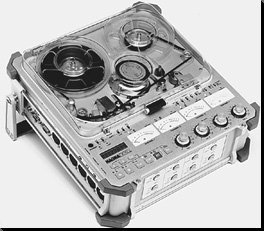Amek Systems and Controls Ltd. has announced the latest outboard module in the System 9098 range of its “by Rupert Neve, the Designer” product line.
The 9098 Dual Compressor/Limiter features a signal path designed throughout by Rupert Neve. It uses the same circuit techniques employed in the 9098 Production Console and other System 9098 devices such as the RNEQ Mic Pre/EQ and RCMA remote-controlled mic amp. However this versatile Compressor/Limiter also retains the character of his classic designs of the late 60’s and early 70’s, notably the 2254.

Digital processing is used in the System 9098 Dual Compressor/Limiter control circuitry, but the audio signal path is a “Virtual Class A” analog design throughout. Very accurate control of the envelope parameters is ensured by the use of a precision RMS converter allied to digital control of the sidechain.
Other key principles of the new unit include extended frequency response and careful attention to the design of the transformer-coupled input and output stages to virtually eliminate RFI and grounding problems.
The System 9098 Compressor/Limiter is a 2U rack-mounting unit designed to complement other units in the System 9098 range. It offers two identical channels of signal processing. The sidechains may be linked for stereo operation. Each channel provides independent control of Compressor and Limiter functions, and they may be used together to create a dual-slope device.
The Compressor section offers adjustment of threshold (-30 to +12dBu), Ratio (1.5:1 to 20:1), attack (0.3mS to 150mS) and release (100mS to 5S). Switches are provided for selection of hard or soft knee and auto-release modes. The Limiter section provides for independent adjustment of threshold (0dBu to +20dBu) and release (50mS to 1S), with two switched attack times.
In accordance with Mr Neve’s traditional designs, each channel incorporates a large illuminated moving-coil VU meter which can be switched to display gain reduction, input or output signal levels or sidechain signal, in external mode. Operation of the Limiter section is indicated by an LED.
All inputs and outputs of the unit, including the sidechain access points, are balanced on rear-panel XLR connectors. The main inputs and outputs use transformers, while the sidechain send and return use Mr. Neve’s well-known TLA (Transformer-Like Amplifier) design.
A unique capability offered by the System 9098 Dual Compressor/Limiter is its Ambience Mode. This innovative feature permits the effective reduction or removal of unwanted background noise or excessive ambience and reverberant fields, during recording, or even afterwards.
Ambience Mode is not simple gating. It actually puts the unit into a different internal configuration and reduces or even removes unwanted signals below the Threshold. Careful adjustment of attack and release controls optimizes the effect. This feature may be used to remove unwanted background noise on field recordings, or to make reverberant recordings sound as if close-mic’d in a dead area.
 The Nagra-D’s new sample sync capability allows two or more machines to be linked together in both record and playback modes for sample-accurate synchronization of the digital outputs. Machines to by synced are linked by a special cable, and time code from the master machine is sent to the slave machine for chase-lock synchronization in the usual manner.
The Nagra-D’s new sample sync capability allows two or more machines to be linked together in both record and playback modes for sample-accurate synchronization of the digital outputs. Machines to by synced are linked by a special cable, and time code from the master machine is sent to the slave machine for chase-lock synchronization in the usual manner.